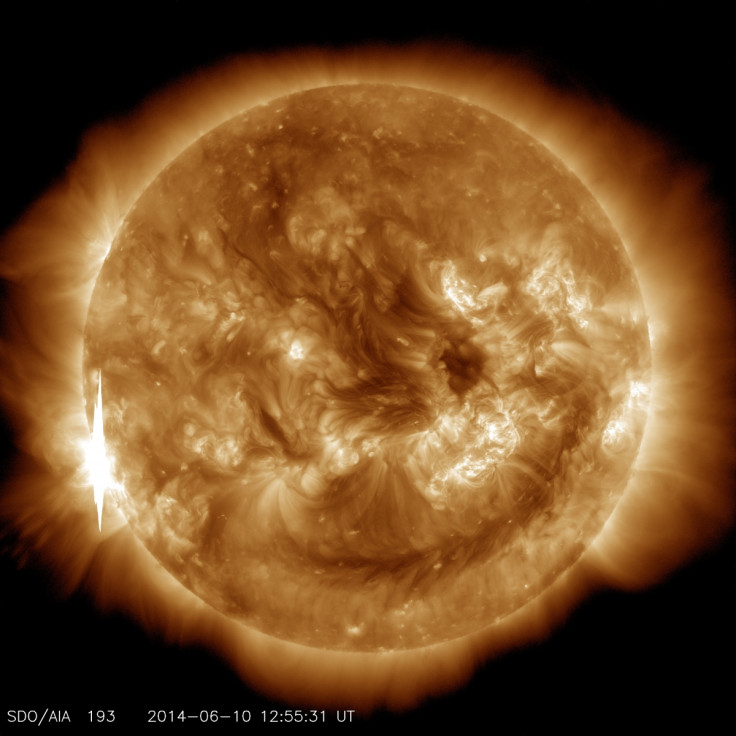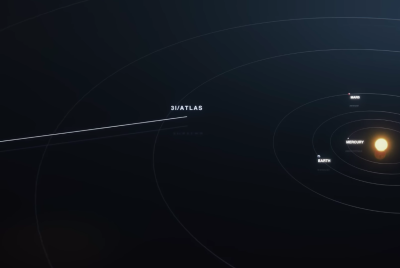Stars make burping sounds when they are fed, scientists discover by chance

Stars make a sort of burping sound when they are fed, scientists have discovered through experiments using ultra-intense lasers.
Researchers were examining the interaction of a lasers on a plasma target when they observed an unexpected result – a sound wave bounced back.
John Pasley, of the York Plasma Institute in the Department of Physics at York, told IBTimes UK: "We did an experiment using high power lasers and we created something that looks a little bit like the surface of a star in the situation where it's got new material falling onto it.
"What we found was that if that material suddenly heats up, if it then starts burning, the direction the material will flow changes, so rather than just falling into the star it will kind of bounce back a bit. What we found was that when that happens the surface of the star becomes unstable as such a way that it generates a very intense sound wave."
The study, published in the Physical Review Letters, found that a trillionth of a second after the laser strikes, plasma flowed rapidly from areas of high density to those of more stagnant, low density – creating a sort of traffic jam. This plasma pile up generated a series of pressure pulses, or a sound wave.
The sound produced had a frequency of nearly a trillion hertz – close to the highest frequency possible and six million times higher than can be heard by any animal on Earth.
"Because the experiment the scale of it was very tiny the frequency of the sound wave is extremely high," Pasley said. "If you were to translate that to an astronomical scale where you're dealing with far larger objects, then the frequency of the sound will be much lower.
"We could drop the frequency - divide it by a factor of about ten million or something which would bring it into the audible range - but it would still only be about eight or nine wavelengths long so even if we dropped it to say 500HZ you'd still have a sound clip that's only a 50<sup>th of a second long. I don't know if anyone would be interested in listening! At the frequency it occurs its way beyond anything we could hear by a factor of a million."

The technique used to observe the sound wave was similar to how a speed camera works – scientists measured how fluid is moving at the point it is struck by the laser: "We have two laser beams. One we use to actually firstly kind of create the plasma from this originally solid target so it looks a bit like the star then that laser beam cranks up in intensity by about a factor of a million and suddenly heats it.
"The other laser beam comes in and it reflects off the plasma you've created with the first laser. What happens is we can then look at the reflection of that incoming laser pulse that we're using to diagnose what's going on. Firstly we can see if it gets brighter or dimmer, but also we can detect frequency shifts in the reflected light which is due to the Doppler Effect, which is exactly what they use in a speed camera to measure whether your car is going too fast or not.
"The reflected light is shifted either to a slightly shorter wavelength to a slightly long wavelength depending on whether the material is going towards you or away from you.
"So taking all these measurements together we were able to reconstruct the fact that what was happening was actually a very intense sound wave coming out of the target, which was totally unexpected. No one has seen it before."
Because the findings are so new, the applications of the discovery are unclear. Pasley said it could be used to explore as a new mechanism for generating sound, but they are only at very early stages.
"The stars might be singing – but, since sound cannot propagate through the vacuum of space, no-one can hear them," he said in a statement.
© Copyright IBTimes 2025. All rights reserved.






















